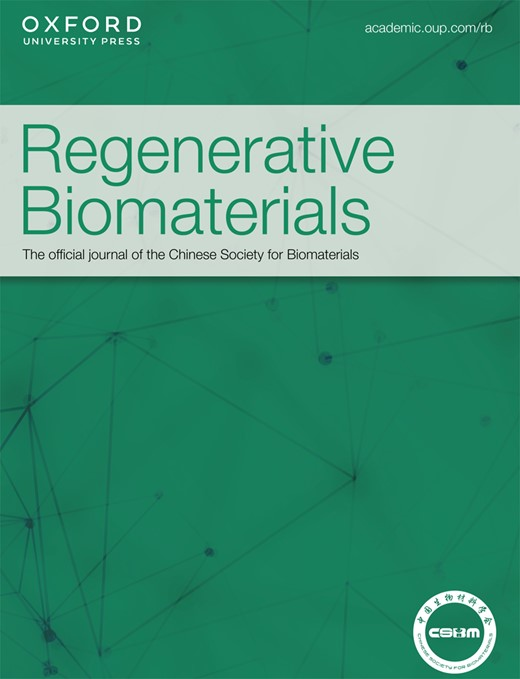Biomaterials for immunomodulation in wound healing
IF 5.6
1区 医学
Q1 MATERIALS SCIENCE, BIOMATERIALS
引用次数: 0
Abstract
The substantial economic impact of nonhealing wounds, scarring, and burns stemming from skin injuries is evident, resulting in a financial burden on both patients and the healthcare system. This review paper provides an overview of the skin's vital role in guarding against various environmental challenges as the body's largest protective organ and associated developments in biomaterials for wound healing. We first introduce the composition of skin tissue and intricate processes of wound healing, with special attention to the crucial role of immunomodulation in both acute and chronic wounds. This highlights how the imbalance in the immune response, particularly in chronic wounds associated with underlying health conditions such as diabetes and immunosuppression, hinders normal healing stages. Then, this review distinguishes between traditional wound healing strategies that create an optimal microenvironment and recent peptide-based biomaterials that modulate cellular processes and immune response to facilitate wound closure. Additionally, we highlight the importance of considering the stages of wounds in the healing process. By integrating advanced materials engineering with an in-depth understanding of wound biology, this approach holds promise for reshaping the field of wound management and ultimately offering improved outcomes for patients with acute and chronic wounds.用于伤口愈合免疫调节的生物材料
皮肤损伤引起的伤口不愈合、疤痕和烧伤对经济的巨大影响显而易见,给患者和医疗系统造成了沉重的经济负担。本文综述了皮肤作为人体最大的保护器官在抵御各种环境挑战方面的重要作用,以及伤口愈合生物材料的相关发展。我们首先介绍了皮肤组织的组成和伤口愈合的复杂过程,特别关注免疫调节在急性和慢性伤口中的关键作用。这突出了免疫反应的失衡,尤其是与糖尿病和免疫抑制等潜在健康状况相关的慢性伤口是如何阻碍正常愈合阶段的。然后,本综述区分了创造最佳微环境的传统伤口愈合策略和最近推出的调节细胞过程和免疫反应以促进伤口愈合的肽类生物材料。此外,我们还强调了在愈合过程中考虑伤口阶段的重要性。通过将先进的材料工程与对伤口生物学的深入了解相结合,这种方法有望重塑伤口管理领域,并最终改善急慢性伤口患者的治疗效果。
本文章由计算机程序翻译,如有差异,请以英文原文为准。
求助全文
约1分钟内获得全文
求助全文
来源期刊

Regenerative Biomaterials
Materials Science-Biomaterials
CiteScore
7.90
自引率
16.40%
发文量
92
审稿时长
10 weeks
期刊介绍:
Regenerative Biomaterials is an international, interdisciplinary, peer-reviewed journal publishing the latest advances in biomaterials and regenerative medicine. The journal provides a forum for the publication of original research papers, reviews, clinical case reports, and commentaries on the topics relevant to the development of advanced regenerative biomaterials concerning novel regenerative technologies and therapeutic approaches for the regeneration and repair of damaged tissues and organs. The interactions of biomaterials with cells and tissue, especially with stem cells, will be of particular focus.
 求助内容:
求助内容: 应助结果提醒方式:
应助结果提醒方式:


